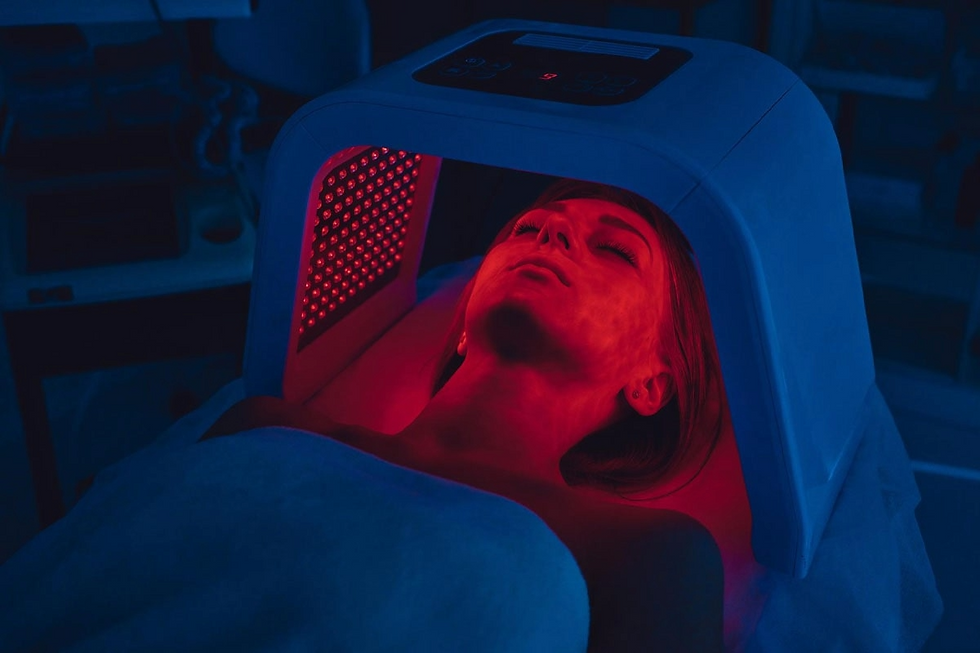Wavelength Matters: Why Choosing the Right Red Light Therapy NM Level Is Key to Results
- Matrix Massage & Bodywork
- Jun 23
- 2 min read

Red light therapy is no longer just a wellness trend—it’s a scientifically validated healing modality that works by delivering light at specific wavelengths to stimulate cellular function. But here’s the catch: **not all wavelengths are created equal.** The effectiveness of red light therapy depends heavily on the specific nanometer (nm) range used.
What Does "nm" Mean in Red Light Therapy?
The term "nm" stands for **nanometer**, which measures the wavelength of light. Different wavelengths penetrate the body at different depths and interact with tissues in unique ways. The most commonly used ranges in red light therapy are between **630–850 nm**, each offering distinct biological effects.
Understanding the Key Wavelengths
630–670 nm (Visible Red Light)
- **Best For:** Skin rejuvenation, wound healing, collagen production
- **Penetration Depth:** About 1–3 mm (skin-deep)
- **Mechanism:** Stimulates fibroblasts and keratinocytes to increase collagen and elastin production.
- **Science:** A 2014 study in *Photomedicine and Laser Surgery* showed improved skintone and texture using 630 nm light for 8 weeks.
810–850 nm (Near-Infrared Light)
- **Best For:** Muscle recovery, joint pain, inflammation, neurological repair
- **Penetration Depth:** Up to 50 mm (deep tissue, bone, brain)
- **Mechanism:** Increases ATP production, blood flow, and activates anti-inflammatory
pathways at the mitochondrial level.
- **Science:** Research from *Lasers in Surgery and Medicine* (2009) showed that
810–850 nm light improves recovery in patients with chronic joint pain and nerve damage.
Why Customizing Your NM Range Matters
Some red light therapy devices only emit a fixed wavelength. But more advanced
devices—like the one at Matrix Massage in Salem, WI —allow for **multiple, blended
wavelengths**, including 630, 660, 810, 830, and 850 nm.
This provides a broader therapeutic spectrum, addressing surface and deep-tissue concerns in one session.
- Want glowing skin? Focus on 630–660 nm.
- Dealing with muscle pain, inflammation, arthritis, joint pain or nerve recovery? Go with 810–850 nm.
- Looking for full-body rejuvenation? Use a device that offers a multi-wavelength output.
Evidence-Based Outcomes by Wavelength
- **660 nm**: Enhances mitochondrial function and promotes skin healing (Barolet et al.,2009)
- **810 nm**: Boosts brain blood flow and reduces depression symptoms (*Journal of
Affective Disorders*, 2016)
- **850 nm**: Effective for joint pain and reducing inflammation (*Photomedicine and LaserSurgery*, 2014)
The Bottom Line
The ability to customize your red light therapy experience by wavelength is not just a
luxury—it’s a critical factor in getting the results you want.
Whether you’re targeting the surface for beauty benefits or reaching deep into tissues for pain relief and repair,
**choosing the right nanometer range is key.**
References
1. Barolet, D., et al. (2009). 'Light-emitting diode photomodulation: A novel anti-aging, noninvasive approach to skin rejuvenation.' *Journal of Cosmetic and Laser Therapy.*
2. Hamblin, M.R. (2016). 'Shining light on the head: Photobiomodulation for brain
disorders.' *Journal of Affective Disorders.*
3. Huang, Y.Y., et al. (2009). 'Biphasic dose response in low level light therapy.' *Lasers in Surgery and Medicine.*
4. Chung, H., et al. (2012).'The nuts and bolts of low-level laser (light) therapy.' *Annals of Biomedical Engineering.*
5. Naeser, M.A., et al. (2014).'Improved cognitive function after transcranial, red/near-
infrared light-emitting diode treatments.' *Photomedicine and Laser Surgery.*

Comments